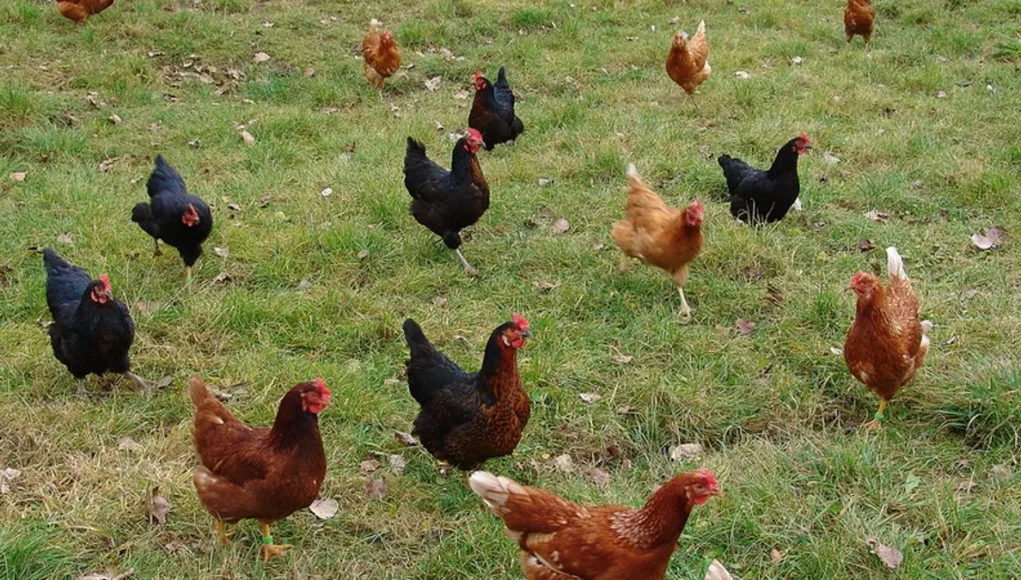For those who raise chickens, whether on a small homestead or a larger farm, ensuring the health and well-being of your flock is a top priority. With natural remedies gaining popularity, many poultry enthusiasts are turning to apple cider vinegar as a potential supplement for their birds. But how much apple cider vinegar to give chickens is a common question among chicken lovers.
In the early stages of exploring natural supplements for your chickens, you’ll find that apple cider vinegar stands out due to its multitude of benefits. However, it’s crucial to understand the right dosage to ensure your flock reaps the benefits without any adverse effects.

What Is Apple Cider Vinegar?
Apple cider vinegar (ACV) is a type of vinegar made from fermented apple juice. It has been used for centuries for its health benefits for both humans and animals. The fermentation process involves converting sugars to alcohol, and then to acetic acid, which gives vinegar its sour taste and strong smell.
Benefits of Apple Cider Vinegar for Chickens
Adding apple cider vinegar to your chickens’ diet can help in various ways:
- Improved Digestion: ACV aids in breaking down food, making it easier for chickens to digest.
- Boosted Immunity: The vitamins and minerals found in ACV can enhance the immune system of chickens.
- Respiratory Health: ACV can help reduce respiratory issues by cleaning the respiratory tract.
- Parasite Control: Regular use of ACV may help in controlling internal parasites.
Determining the Right Dosage
When it comes to figuring out how much apple cider vinegar to give chickens, a general guideline is to add one tablespoon of ACV per gallon of water. This ratio is considered safe and effective for most chickens.
Factors to Consider
While the one tablespoon per gallon rule is a good starting point, several factors might influence the exact amount you might want to use:
- Age of the Chickens: Younger chickens may require a slightly diluted solution compared to adults.
- Weather Conditions: In hotter climates, you might need to adjust the dosage to ensure your chickens stay hydrated.
- Health Status: If your chickens are experiencing health issues, consult with a veterinarian before altering their diet.
How to Administer Apple Cider Vinegar
Administering ACV is straightforward. Simply mix it into their drinking water. Ensure that the mixture is well-stirred and evenly distributed.
Monitoring Your Flock
It’s essential to observe your chickens after introducing ACV into their diet. Look for any changes in behavior or health, and adjust the dosage if necessary.
Potential Risks and Precautions
While ACV is generally safe, there are a few precautions to keep in mind:
- Overconsumption: Too much ACV can lead to digestive issues or an acidic imbalance.
- Container Material: Use plastic or glass containers for the ACV mixture, as metal can react with the vinegar.
When to Avoid ACV
If your chickens show any signs of distress after consuming ACV, discontinue use and consult a veterinarian.
Other Natural Remedies for Chickens
In addition to apple cider vinegar, there are other natural remedies for chickens that can support their health. Herbs like oregano and garlic have been found to offer similar benefits.
Why Choose Natural Remedies?
Natural remedies are often chosen because they are chemical-free and can be easily incorporated into the daily care routine of chickens.
Conclusion
Understanding how much apple cider vinegar to give chickens is crucial for any poultry enthusiast looking to enhance the health of their flock naturally. By following the guidelines and monitoring your chickens, you can ensure they enjoy the benefits of this natural supplement safely.

FAQ
Can I use apple cider vinegar for baby chicks?
Yes, but use a more diluted solution and monitor them closely for any adverse reactions.
How often should I give apple cider vinegar to my chickens?
It is recommended to provide ACV a few times a week rather than daily to prevent any potential side effects.
What should I do if my chickens don’t like the taste?
Start with a smaller amount and gradually increase the dosage as they get used to the new flavor.
This article contains affiliate links. We may earn a commission at no extra cost to you.











